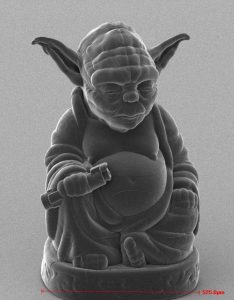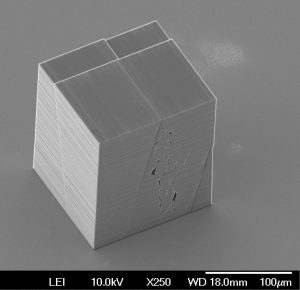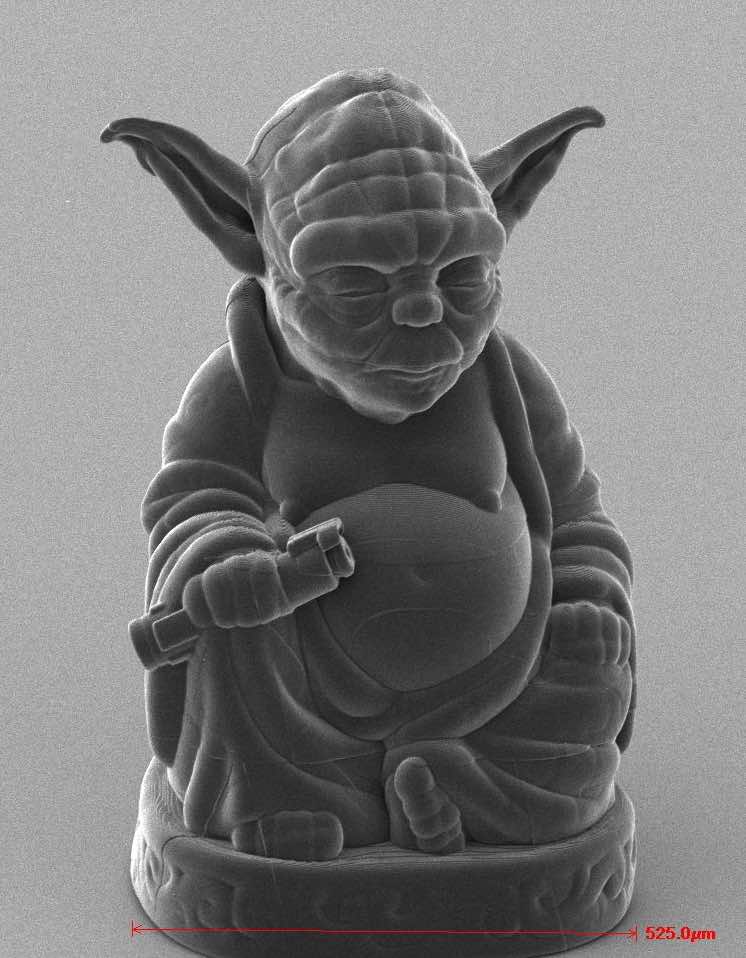
Researchers and engineers across many fields, including optics, medicine, fluidics and mechanics, are increasingly interested in creating nanoscale parts for a variety of different applications. However, conventional equipment cannot fabricate three-dimensional nanostructures with sufficiently high resolution. The Washington Nanofabrication Facility is excited to offer users access to the Nanoscribe 3D Printer, a cutting-edge lithography system that produces unique 3D structures with 500nm resolution. This two-photon laser writer allows for additive manufacturing and maskless lithography within the same device. Its high printing resolution gives users greater design freedom when creating very small, complex parts with intricate features. Moreover, the Nanoscribe uses a simple workflow to rapidly fabricate micro-sized parts from virtual 3D models.
The Nanoscribe has many advantages over conventional manufacturing techniques. Current users appreciate that they can quickly change or adjust a process or structure thus avoiding long turnaround times. In addition, because users are not restricted to Nanoscribe resins, it is possible to test different materials with different properties – this is especially important for users designing parts for specialized applications. It should also be noted that, though the Nanoscribe is of course known for its ability to print 3D microstructures, it can also fabricate 2D structures with high resolution.

For those interested in using the Nanoscribe, WNF engineer and staff member, Duane Irish, is available to train new Nanoscribe users and work with them to design functional processes. After just two training sessions, users can independently operate this unique tool. This new instrument is already heavily used. Its popularity stems from its next generation capabilities, as well as its ability to accommodate a wide range of projects, from biology and bioengineering to chemistry and electrochemical projects to mechanics and light interaction projects. For more details on the Nanoscribe’s key features visit: https://www.nanoscribe.de/en/. WNF user rates can be found here.
The Nanoscribe was brought to the University of Washington campus through a National Science Foundation Major Research Instrumentation grant (#1624513).
